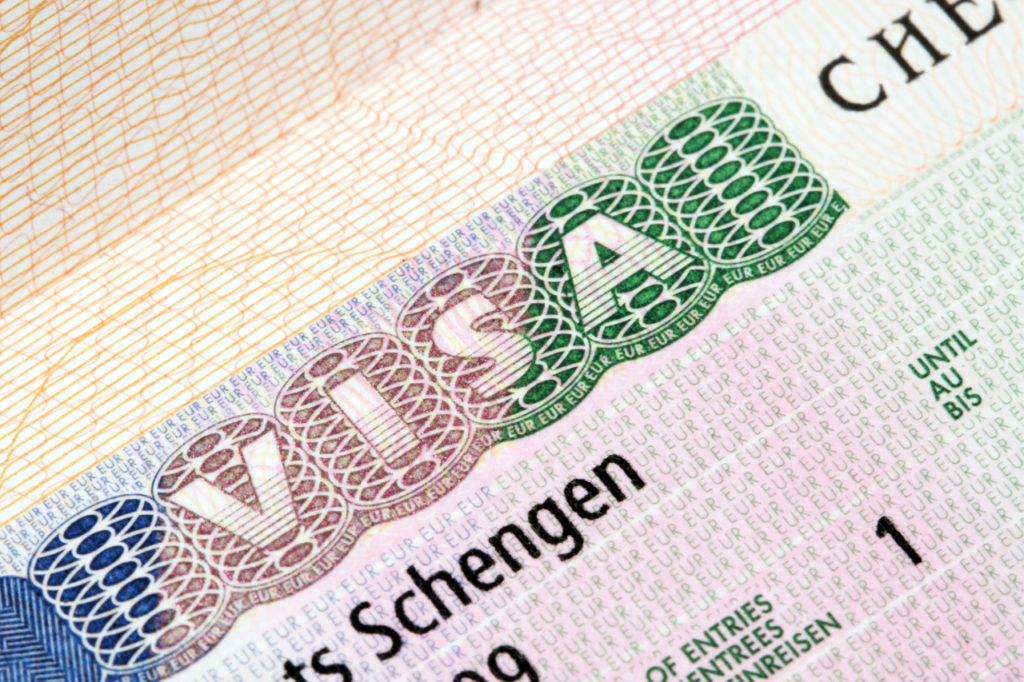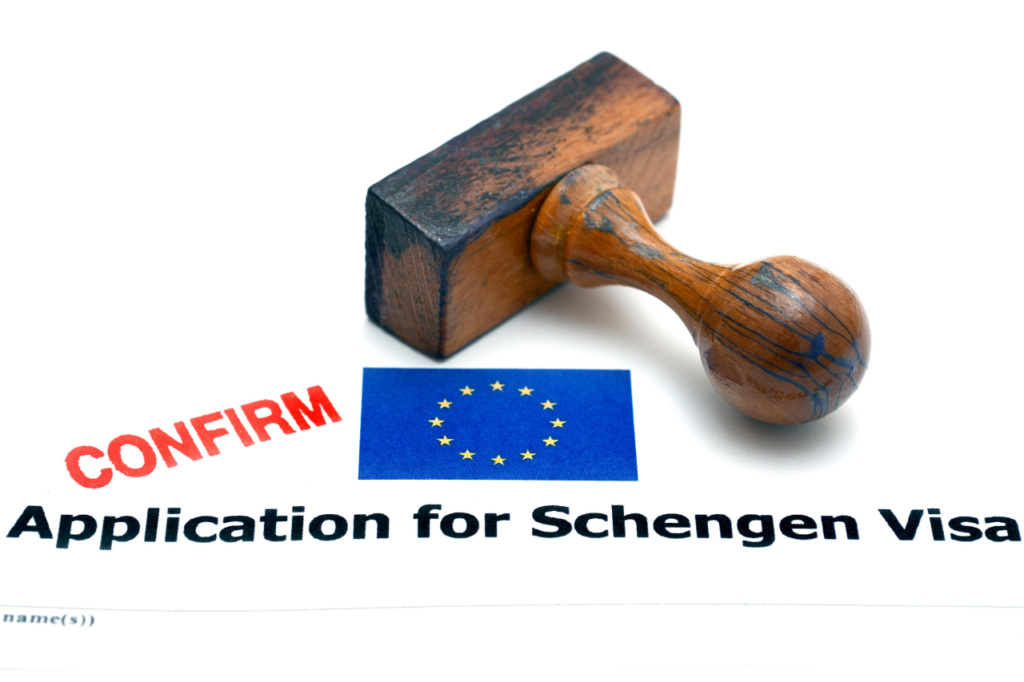Traveling to Europe has become straightforward for citizens of many countries worldwide. With borders eliminated between European nations and visa-free entry for numerous nationalities, Europe’s capitals have become top global tourist destinations. This guide explores the schengen visa tips for US travelers.
The interest of US Citizens in Exploring Europe
American citizens share a keen interest in exploring Europe, much like Europeans are curious about the 50 states of North America. However, amid the easy travel, US travelers often face bureaucratic challenges. They wonder whether an EU visa is needed before entering the Schengen Zone, what steps are involved, and which documents are essential for the process.
EU Visa Requirements for US Citizens
Exemption for US Passport Holders
US citizens with valid US passports can enjoy easy travel to 27 European countries in the Schengen Area. They can stay for up to 90 days for tourism or business without needing a Schengen visa.
Scenario for US Residents of Other Nationalities
For non-American residents living in the US planning a trip to Europe, visa requirements depend on their nationality.
Visa-Free Regime:
Residents of the US from countries with visa-free agreements with the EU can enter Europe without a visa.
Visa Application Necessity:
However, residents of the US from countries without visa-free agreements must apply for a Schengen visa in the US before visiting any Schengen member country and the tips.
Required Documents for Entering the Schengen Area
Even though US citizens do not need an EU visa to travel to the Schengen Area, they must have certain essential documents for entry into Europe’s visa-free zone.
Upon arrival at the Schengen border, American travelers will need to show:
- Valid US Passport: The passport should have been issued within the last 10 years and must be valid for at least three months beyond the planned departure date from the Schengen Area.
- ETIAS Authorization (Starting in 2024): Beginning in 2024, US citizens will need to obtain an ETIAS authorization before traveling to Europe.
- Purpose of Entry Documentation: US travelers must provide proof of why they are visiting the Schengen Area.
- Proof of Financial Means: Documents showing the traveler has enough funds to support themselves during their stay in Europe.
Note: The final decision on entry into the Schengen Zone rests with the border guard. If entry is denied, the traveler may need to apply for a standard Schengen visa upon returning to the US.
Which EU Countries Allow Visa-Free Entry for US Visitors
US citizens have the privilege of traveling visa-free to both the Schengen Zone and the wider EU region.
European countries that permit visa-free entry for US citizens include:
- Austria
- Belgium
- Croatia
- Czech Republic
- Denmark
- Estonia
- Finland
- France
- Germany
- Greece
- Hungary
- Iceland
- Italy
- Latvia
- Liechtenstein
- Lithuania
- Luxembourg
- Malta
- Netherlands
- Norway
- Poland
- Portugal
- Slovakia
- Slovenia
- Spain
- Sweden
- Switzerland
Duration of Stay in Europe
US citizens can stay in the Schengen Area for a maximum of 90 days within any 180 days.
Key points to remember:
- The entry date starts the visit.
- The exit date ends the visit.
- It’s crucial to comply with this timeframe. Overstaying can lead to penalties or deportation.
Understanding the 90/180 rule is straightforward. The 180-day period is always moving. Before entering the Schengen Zone, calculate the past 180 days and check if your stay within that period exceeds 90 days.
Note: Time spent under a residence permit or long-stay visa does not count towards the visa-free stay duration.
For accurate calculations, use the Schengen calculator to determine your allowable short-stay days in Europe.
Extending Stay Beyond 90 Days
If your travel plans require staying in Europe for more than 90 days, you’ll need to apply for a residency permit.
Travel Health Insurance: A Wise Choice for US Travelers
While US citizens visiting the Schengen Area for short trips don’t need travel medical insurance, it’s a smart idea to get it. This insurance protects against unexpected medical situations like illnesses or accidents during your journey.
US Citizens Ineligible for Visa-Free Entry
If a US citizen or someone from a visa-free country is denied entry to the Schengen Area, they must apply for a Schengen visa within the US.
Visa applications should be submitted at the embassies or consulates of the main country you plan to visit, located in the US. In certain situations, embassies may authorize visa submissions to another Schengen country’s diplomatic mission or third-party visa service providers.
Insider Tips for American Travelers Exploring Europe
Whether it’s your first or returning trip to Europe, these travel tips are tailored for American adventurers:
- Avoid peak tourist seasons for a more peaceful experience at popular European destinations. Off-season travel often means lower costs for accommodations, transportation, and tours.
- Consider budget airlines for travel within Europe, especially for shorter distances. Sacrificing some amenities can lead to significant savings.
- Trains are a cost-effective and scenic way to navigate through Schengen states and cities, offering breathtaking views along the way.
- Engage with locals to discover hidden dining spots and lesser-known attractions. Locals can recommend affordable eateries and unique places off the tourist path.
- Pre-book accommodations and transportation to avoid last-minute hassles and long waits.
- While credit cards are handy, some places only accept cash. Keep local currency for taxis, tips, and small purchases to avoid foreign transaction fees.
- Not all EU countries use the Euro. Be familiar with the local currencies of your destinations for smoother transactions.
- Pack an umbrella for unexpected showers in cities like Ljubljana, Naples, and Turin, known for sporadic rain.
Challenges US travelers face when applying for a Schengen visa
US travelers applying for a Schengen visa may encounter several challenges during the process. Here are the main issues they face:
1. Documentation Requirements
One of the most significant challenges is ensuring that all required documents are complete, accurate, and genuine. This includes providing:
- A valid passport with at least two blank pages and issued within the last ten years.
- Proof of accommodation, such as hotel reservations or an invitation letter.
- Evidence of sufficient financial means to cover expenses during the stay, which can include bank statements or salary slips.
2. Financial Proof
Applicants must demonstrate adequate financial resources to support themselves while in the Schengen Area. Failure to provide convincing evidence can lead to rejection. This requirement often leads to concerns about whether applicants have enough funds, especially for those from lower-income backgrounds.
3. Travel Insurance
Travel insurance is mandatory for all Schengen visa applicants. The insurance must cover medical emergencies and repatriation costs. Many travelers overlook this requirement, which can result in delays or denials if not addressed properly.
4. Clear Travel Itinerary
A well-defined travel itinerary is crucial. Authorities may reject applications if the itinerary appears dubious or poorly planned. Applicants need to ensure that their travel plans are coherent and supported by relevant documentation.
5. Demonstrating Ties to Home Country
Visa officials assess applicants’ ties to their home country to gauge their likelihood of returning after their visit. This can include stable employment, property ownership, or family obligations. Weak ties may raise red flags and lead to visa denial.
6. Previous Visa Rejections
A history of previous visa rejections can complicate future applications. Applicants must address any past issues that led to denials and ensure their current application is meticulously prepared.
7. Lengthy Processing Times
The application process can be lengthy and complex, often requiring significant advance planning. Travelers may face delays that disrupt their travel plans, especially if they do not apply well ahead of their intended departure date.
8. Discrimination and Bias
While this primarily affects applicants from certain regions, systemic biases in visa processing can impact US travelers from diverse backgrounds, complicating their applications due to perceived risks associated with their nationality.By being aware of these challenges and preparing accordingly, US travelers can enhance their chances of a successful Schengen visa application.
As you start your journey to Europe from the United States, use these insights and tips to navigate the Schengen visa and beyond smoothly. Europe’s captivating history, diverse cultures, and stunning landscapes are waiting for you to explore.
How Law and Visas Can Help?
At Law and Visas, our team of expert immigration consultants is here to make your travel to Ireland for business straightforward and successful. Whether you’re applying for a Business Visa or a Work Visa, we handle every step—from preparing your application to gathering the required documents.
Our Immigration Consultants and Lawyers ensure that your application meets the highest standards, with no details missed. We’ll also keep you informed throughout the process and coordinate with the immigration office or embassy on your behalf.
Law and Visas have a strong record of helping clients secure the visas/permits they need to visit Finland. You can call us today at +234 812 5505 986 to learn how we can help you.





